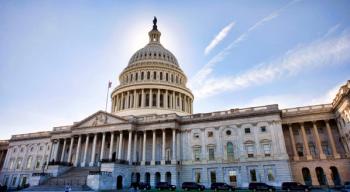
Essential benefits must take affordability into account
Health plans offered through exchanges will have to provide benefits packages that cover at least 10 "essential" categories.
It's a difficult assignment, as benefit requirements will determine whether coverage is affordable and meets diverse patient needs.
To help assess the trade-offs, an Institute of Medicine (IOM) blue-ribbon panel is analyzing the options and will advise HHS in September on how to weigh coverage options. Insurers, providers, patient groups and other stakeholders have plenty to say.
Unlike other health reform measures, Congress did not spell out what should be covered in each category but left it to HHS to set the specifics based on "typical" employer benefit packages. It's not clear what is "typical," so the Department of Labor is conducting a survey.
At the first meeting of the IOM committee in January, MIT economist Jonathan Gruber noted the difficult trade-off between offering generous coverage and keeping benefits affordable. He advised the panel not to be "greedy."
PPACA already makes coverage more accessible by eliminating discrimination based on pre-existing conditions. Mandating that all individuals purchase health insurance obligates policy makers to provide insurance that is as affordable as possible.
HHS should consider that PPACA already sets limits on individual out-of-pocket spending, noted Carmella Bocchino of America's Health Insurance Plans (AHIP). Gruber said that more comprehensive benefits impose higher costs on private payers, as well as on the federal and state governments. He also warned that additional coverage requirements might increase opposition.
MUST-HAVE BENEFITS
A long list of providers want their services covered. For example, chiropractors want to be considered essential, as do fertility specialists, rehabilitation clinics, psychiatrists and plastic surgeons. Oncologists fear curbs on treatments, as do patients with rare conditions. Pharmaceutical companies warn against limits on reimbursement of more costly medicines, and pharmacists want compensation for patient counseling.
States want flexibility to keep local mandates in place, while employers and payers advise against including state mandates as "essential."
An important issue for insurers are "medical necessity" determinations on coverage within benefit categories. Any definition of essential health benefits must still permit insurers to utilize medical management tools to determine whether services are medically necessary, based on evidence-based research, according to Virginia Calega, vice president at Highmark Blue Cross and Blue Shield of Pennsylvania.
Those services and therapies found less effective or appropriate could carry limits on doctor visits or higher cost-sharing to discourage less appropriate care.
Jill Wechsler, a veteran reporter, has been covering Capitol Hill since 1994.
Newsletter
Get the latest industry news, event updates, and more from Managed healthcare Executive.





















































